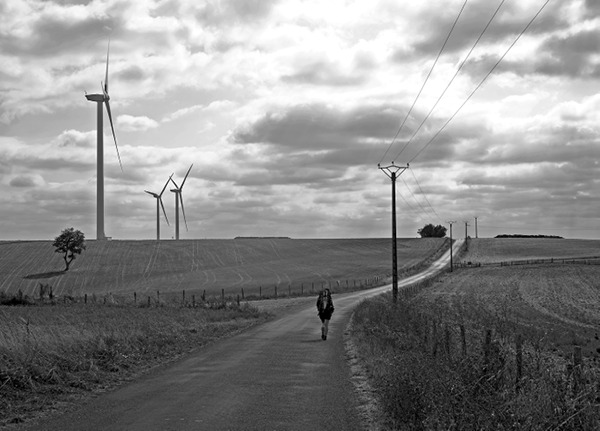
ÉTALON
first performed on June 23, 2018
Dunkirk, France to Barcelona, Spain
performed once in 2018
SARA MORAWETZ
Boni Cairncross, Alex Pedley, Kath Fries, Laura Hindmarsh
Brooklyn, NY / Sydney, Australia
614139856s614139856a614139856r614139856a614139856@614139856s614139856a614139856r614139856a614139856m614139856o614139856r614139856a614139856w614139856e614139856t614139856z614139856.614139856c614139856o614139856m
etalon-walk.com
saramorawetz.com
ÉTALON
SARA MORAWETZ
In 1792, Napoleon gave two French astronomers an ambitious task: to traverse an arc inscribed on the surface of the Earth and create a new “universal standard”—le métre-étalon: the meter. The pair, Delambre and Méchain, travelled the length of the meridian arc from Dunkirk to Barcelona surveying both the land beneath and sky above to measure the curvature of the Earth. Using this data, they defined the meter as a “natural” standard: one-ten-millionth of the distance from the North Pole to the Equator. This was a new kind of metric, borne neither of politics, nor the aristocracy—it was instead drawn from the Earth itself.
In the summer of 2018, I staged a performative walk along la Méridienne de France. Accompanied by a team of female artists, I retraced this expedition, walking 2,100 km over 112 days to observe and document the Earth’s characteristics, and derive a new “meter” borne of physical action and endurance. Walking, by design, infers time and motion as experienced on a human scale. It can reduce a formidable task (such as crossing a country or contemplating a metric) to the simplest of human gestures: the positing of one foot in front of the other. Through this action I attempted to embody the meter (slowly — thoughtfully — introspectively), allowing the imperceptible arc of the Earth to curve beneath my feet.
“étalon” was devised as an encounter with the meter as a physical, emotional, and conceptual postulate, experienced over an expansive terrain, and viewed from multiple perspectives. Each step was an act of (re)evaluation and (re)consideration—examining the performativity of science, exploration, and the creation of a standard through the female gaze. The word “étalon” denotes both “standard of measure” and “stallion”—a breeding horse, a male exemplar. This work was designed to privilege a perspective distinctly lacking within historical narratives, subverting the masculine framework often entrenched in scientific discourse and discovery.
Formed by a collective of voices and crystalized through tactile experience, the new “mètre-étalon” is something more than a fixed and immutable construct—it is a shared phenomenological encounter; an assemblage of time passed and distance travelled; a measuring of self against the limits of our own domain.